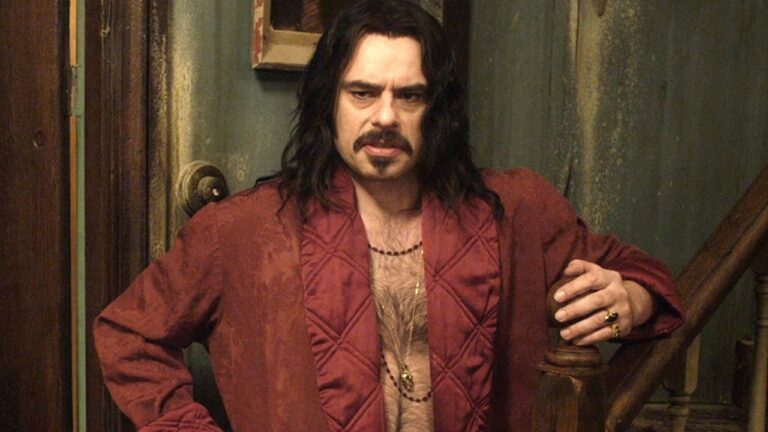Introduction: A Thrilling Ride into the World of Formula One
F1: The Movie is set to hit theaters on Friday, June 27, promising an adrenaline-fueled journey into the high-stakes universe of Formula One racing. With stunning visuals and a compelling storyline, the film aims to capture the essence of speed, skill, and rivalry that define this elite motorsport.
The Heart of the Film: A Classic Sports Movie with a Fresh Spin
One of the film’s most memorable moments is a rallying speech that emphasizes teamwork and precision. It highlights how even the tiniest contributions—half a second here or there—can determine whether a team finishes last or first. This speech encapsulates the core message of the movie: success hinges on collective effort and attention to detail. While it may not revolutionize sports cinema, it effectively underscores what makes a great sports film: relatable characters, intense competition, and the pursuit of greatness.
Why Sports Movies Resonate
As a dedicated fan of sports films, I’m always drawn to stories about underdogs overcoming the odds—whether on a field, court, or racetrack. Since the release of Rocky in 1976, the genre has relied on a proven blueprint that’s difficult to mess up. F1: The Movie follows this tradition closely, weaving familiar themes of perseverance, redemption, and rivalries into a compelling narrative.
Masterful Direction and Technical Excellence
Director Joseph Kosinski demonstrates mastery over the sports-movie formula. Teaming up with acclaimed cinematographer Claudio Miranda, known for his work on blockbuster films, Kosinski creates a visually stunning experience. The movie features breathtaking camera angles, rapid pans, and immersive shots that make viewers feel as if they are seated inside the cockpit.
Visuals and Action Sequences
- Impossible camera angles that showcase the speed and power of Formula One cars
- Dynamic editing that captures the chaos and precision of racing
- Intimate shots that put viewers directly in the driver’s seat, feeling every turn and acceleration
Stephen Mirrione’s editing work further enhances the film’s rhythm, seamlessly transitioning between tense, quiet moments and high-octane action. The tire change scene, for example, perfectly illustrates the movie’s attention to detail and pacing.
Character and Cast Performances
In front of the camera, the film benefits from a talented cast that brings the familiar sports-movie archetypes to life. Brad Pitt stars as Sonny Hayes, a weathered, almost Quixotic racing veteran searching for one last shot at glory. Pitt’s effortless charm and veteran presence give the character depth and relatability, embodying the archetypal seasoned hero.
Supporting Characters and Dynamics
- Javier Bardem as Sonny’s close friend, desperately trying to keep up and support him
- Kerry Condon as the sharp and resourceful technical director, Kate McKenna
- Damson Idris as Joshua Pearce, the talented but cocky rookie eager to prove himself
These performances add layers to the story, creating a believable and engaging team dynamic. The camaraderie and tension among the characters are palpable, contributing to the film’s emotional stakes.
Familiarity Meets Excellence: The Strengths and Weaknesses
While the film excels technically and narratively, it also leans heavily on familiar tropes. The internal battles between Sonny and Joshua mirror many classic sports rivalries, and the rivals on the circuit are depicted as archetypes rather than fully fleshed-out characters. An attempted adversarial subplot in the final act feels somewhat unnecessary and predictable, adding a layer of cliché to an otherwise solid story.
The Race to the Finish
The climactic race showcases impressive set-piece filmmaking, but at times, the exposition-heavy dialogue about obscure racing rules can detract from the momentum. Still, for casual viewers and fans alike, the core racing sequences remain exhilarating and accessible, with each obstacle escalating the tension and character growth.
The Verdict: A Well-Oiled Machine with Some Rough Spots
F1: The Movie sticks closely to the well-worn sports-movie formula, but that’s not necessarily a flaw. When executed with skill and passion, familiar patterns can create powerful and satisfying stories. Kosinski’s direction, combined with top-tier performances and technical prowess, elevates this film beyond mere clichés.
For about 125 minutes of its 156-minute runtime, F1 is a polished, high-performance vehicle that delivers excitement, emotion, and spectacle. However, in its quieter moments, it sometimes reverts to the rookie mistakes of over-explanation and predictable plot points. Still, it remains a compelling tribute to the relentless pursuit of speed and excellence in the world of Formula One racing.












